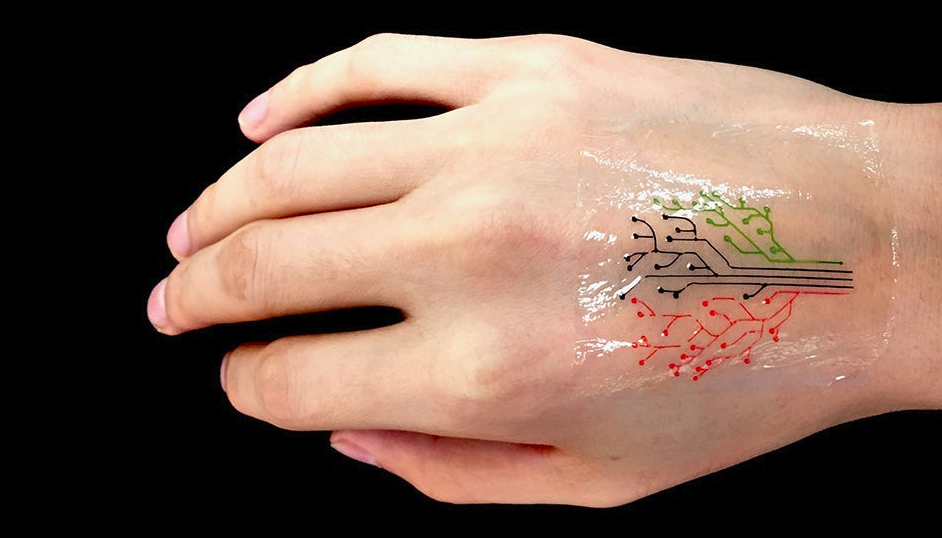3D printing technology is becoming more and more mature, bio-solar cells, ear bones, bombs... Objects that can be manufactured by 3D printing are nothing. Recently, MIT has launched a new study to print the “Basic Modified Bacteria†into a “live tattoo†that can be used to create a bio-computer by chemically stimulating the color of the tattoo. The first step in getting a tattoo to "live" is to find the right cell. Generally, animal cells are too fragile and easily broken, which cannot meet the experimental requirements. The multi-selection found that the bacterial cell wall is strong enough to survive the printing process and is also fully compatible with the hydrogel used in 3D printing. Therefore, bacteria are the best choice for "ink" materials. To showcase the research results, the researchers applied specific chemicals to the back of the tester's hand and made them into a tree-shaped tattoo sticker by 3D printing. They were glued there, and after a few hours, the tree tattoo Reacts with chemicals and is "lighted" into different colors. The researchers also genetically modified these bacteria, allowing some bacteria to produce color changes only when they received specific signals from other bacteria, and based on this, they printed "output" and "input" respectively. Layer structure, when they overlap, the "input" bacteria will generate a signal due to chemical stimuli, informing the "output" bacteria to change color. According to the researchers, such a structure is like a very simple combination of electronic components. In the end, it is impossible to create a "living computer" that is hard to imagine. It is not impossible to combine and transmit signals in a similar way through different forms and functions of the basic bacteria to create a complex structure like a microchip. From a more pragmatic point of view, this technology can be applied to areas that are heavily influenced by chemical factors, such as warning stickers that can respond to certain temperatures and pH values, or health monitoring equipment that is used to monitor targets. on. Powder puff, face puff or sponge puff is a kind of makeup tool. Generally, powder puff is included in loose powder and compact powder boxes as powder puff or saperated in multiple shapes,like the triangle powder puff . They are mostly cotton and velvet materials, which are used to dip foundation and modify makeup.
Try to put the puff in a box independently to ensure its cleanliness, and don't mix colors with other cosmetics.
Powder puff, face puff or sponge puff is a kind of makeup tool. Generally, powder puff is included in loose powder and compact powder boxes as powder puff or saperated in multiple shapes,like the triangle powder puff . They are mostly cotton and velvet materials, which are used to dip foundation and modify makeup.
Powder Puff,Sponge Puff,Make Up Puff,Loose Powder Puff,Triangle Powder Puff Jilin Xiangqi Technology Co., Ltd , https://www.xqccosmetics.com
According to the different types of powder puffs, the main functions are as follows:
Sponge puff is more suitable for wet water use, it is convenient to push the Liquid Foundation evenly;
The triangular shape is convenient to apply to the corners of the eyes and the wings of the nose.
Wet and dry powder puffs are generally round or rectangular. You can apply wet or dry powder on your face regardless of whether it is used wet or not.
Regardless of whether you choose a sponge puff or a wet or dry puff, the softness is better.
The puff you just bought also needs to be cleaned before use to make the skin feel soft and comfortable. The puff should keep the surface fluffy and don't make the surface hard. Powder puffs are used throughout the makeup process, so experienced makeup artists will have more than two clean powder puffs for easy replacement.
Dry puffs are best cleaned every day to ensure cleanliness, which is very important to keep the makeup clean. If you lose the soft touch during use, you need to wash it with soap.
After the puff is cleaned, do not wring it with your hands, wrap it with a towel to squeeze the moisture, and then dry it thoroughly in a cool place. If the puff becomes hard after it dries, rub it gently with your hands.